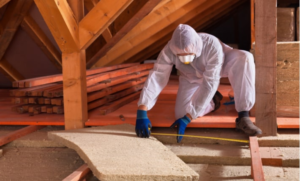Search engine optimization (or SEO) is the process of improving a website or web page to rank higher in search engines. It involves several best practices and actions.
Digital marketers must stay current with the latest SEO news, research, and trends. In addition to gaining a deeper understanding of the fundamentals, more formal educational opportunities are available on the topic. Visit Website to learn more.

Keyword research is arguably the most important part of an SEO strategy. It helps us determine the search queries that our audience enters into Google and which pages rank for those terms. Keyword research also helps us understand the buyer intent behind those searches so we can create content that answers their questions, fulfills their needs or entices them to take action. Unfortunately, this step is often neglected and shortcuts taken in order to meet aggressive deadlines and budgets.
Performing keyword research starts with developing a detailed customer persona and understanding your audience’s goals, needs and challenges. From there, we can drill down into the specific words and phrases they enter into search engines to find what they’re looking for. These keywords can fall into two categories: keywords that are used to find your product or service (Product Keywords) and those that a potential customer might use when they’re not necessarily looking for anything at all but would be happy to land on your page if it provided them with the information they need (Informational Keywords).
Once we’ve identified our target keywords, we need to identify the competition involved in ranking for those terms. A tool like Ahrefs’ Keyword Difficulty can give us a sense of the level of difficulty that would be required to achieve a top position for a particular query.
Depending on the competitiveness of a term, it may be worth spending more time exploring related keywords that have lower competition but still attract enough users to make them worthwhile. We can do this by entering our target keyword into a search engine and scrolling down to the bottom to see suggested searches that are relevant to our initial input.
From here, we can begin to fill in the general topics or “buckets” that we wish to rank for by brainstorming a list of relevant words and phrases associated with each bucket. This is a great opportunity to get creative and think outside of the box. For example, a cybersecurity company might want to rank for the terms’ data breach prevention’ and ‘penetration testing’ but could also consider ‘SEO agency’ and ‘Manchester coffee shop’.
On-Page Optimization
On-page optimization, also known as on-site SEO, is the process of optimizing elements that are directly within your web pages. These include things like title tags, meta descriptions, and content. It is an important part of any SEO strategy because it helps search engines understand what your page is about and how it can satisfy a search query.
To optimize a web page for SEO, it is important to focus on one keyword at a time and use that keyword throughout the text. However, it is important to avoid keyword stuffing – that is, using the keyword too many times in a way that does not sound natural. Also, it is important to include synonyms and related keywords when possible so that search engines can match the most relevant results for a given query.
Keeping up with on-page SEO is an ongoing process, as Google continues to refine its algorithms. However, if done correctly, on-page optimization can help your website rank higher in search engine results pages and drive more organic traffic.
A well-optimized website will have a number of on-page SEO factors in place, including title tags, meta descriptions, and content (including keyword usage). In addition, it will be mobile responsive, have internal links, and provide a positive user experience.
Title tags are the first thing that a search engine sees when it crawls your site. As a result, they are a crucial factor in determining your site’s ranking. They should be clear and concise, contain your keyword(s), and reflect the context of the page. Title tags are also visible to users on search engine results pages (SERPs) as the title of the listing.
Meta descriptions are the snippet of text that displays below the title on SERPs. They should be optimized with your keyword(s), be informative, and encourage click-throughs. Ideally, the keyword should be included in the first paragraph of the description. A good way to test this is by searching for your competitors’ websites and analyzing their SERPs to see how they are using their titles and meta descriptions.
On-page optimization is the foundation of any effective SEO campaign. Without it, your website will struggle to rank high in search engine results pages. So take the time to learn about on-page optimization, implement it on your site, and watch your organic rankings improve!
Link Building
Link building is a set of SEO strategies that focuses on getting other websites to link back to yours. These links, also known as inbound links, demonstrate to Google that your website is popular and authoritative on a subject. They also help search engines figure out what keywords your page is targeting and rank it accordingly. There are two types of links: external and internal.
Ideally, people will link to your content on their own accord. But this is rarely the case, especially for brand new websites. For this reason, experienced SEO professionals have developed a series of tactics that they use to get other websites to link to their pages. These tactics include guest posting, finding pages that list resources related to a topic (and asking to be added to that list), and using tools like Broken Link Builder and Outlinks to find broken links on other websites.
In the past, a big part of determining how well a webpage would rank was the number of inbound links it had. While this still plays a role, search engines now evaluate pages on a much more complex basis. They take into account the quality of the links, as well as their quantity. They also look at other factors like the authority of the source, and whether or not they are related to your niche.
For example, if the New York Times links to your page, this has a higher value than a link from a small, personal blog. This is because larger sites are considered more authoritative in their field. They have spent years building up trust with consumers, and they have a larger audience than smaller, more niche blogs.
Of course, it is important to remember that link building should not be the primary focus of your marketing strategy. It is a secondary factor, and should be done only after you have properly mapped out a keyword strategy and on-page optimization. Otherwise, you run the risk of being hit with a manual penalty from Google. I’ve seen this happen multiple times, and it can be extremely difficult to recover from.
Content Marketing
SEO and content marketing are two distinct but symbiotic aspects of digital marketing that play an essential role in a website’s search engine visibility. By performing keyword research, using effective on-page optimization techniques and focusing on creating valuable, relevant, and useful content that speaks to the needs of the target audience, marketers can improve their websites’ visibility in organic search results.
In addition, by leveraging SEO to create a strong content strategy, businesses can establish and fortify their credibility in the eyes of potential customers. As more consumers conduct diligent research before making purchases, establishing trust is vital to a brand’s success. A well-crafted content strategy builds this trust and helps to drive traffic and conversions from interested audiences.
Content marketing in seo is an integral part of the SEO process and should be a core component of any digital marketing plan. It involves the creation and distribution of various types of online content, such as blog posts, videos, infographics, and social media campaigns that are optimized with targeted keywords and structured to engage and inform users. By delivering regular, valuable, and engaging content to a targeted audience, marketers can encourage users to invest in the company and its products.
Unlike traditional advertising, content marketing focuses on providing helpful information to potential customers. It is a powerful tool that can be used to attract new clients, build customer loyalty, and increase sales. Moreover, it is a cost-effective way to promote your business and services.
However, there are a few challenges associated with the integration of content marketing and SEO. First, it can be difficult to find a balance between the needs of search engines and users. To address this issue, marketers should clearly define their target audience and use industry digital marketing tools to identify and rank keywords that are most relevant to the company’s offerings. In addition, marketers should keep in mind that search engine algorithms are constantly changing, so it is important to stay up-to-date on the latest trends to ensure that their content continues to rank high in organic search results.


